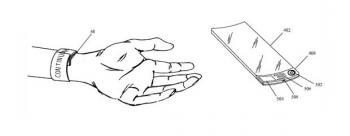United Keys announced today that it has formed a strategic partnership with Hon Hai Precision Industry Company, a member of Foxconn Technology Group. As part of this partnership, Foxconn, the world's largest contract manufacturer, will build display-key input devices using United Keys technology. The first product, a keyboard tailored for PC gaming, will start shipping as early as summer. The company also announced new patents and patents pending in a number of countries, representing a portfolio of IP with broad application making use of display keys.
Display-keys are regular keyswitches with small OLED (organic light-emitting diodes) displays embedded in their tops. This allows interactive and image-based communication between software and users. The promise of display-key input devices is a significant improvement in usability for any application. For example, macros or other actions can be mapped to OLED keys with user-customizable images or icons precisely identifying their function. In the future, display-key support will be included in new software applications, where keyboard OLEDs change contextually and dynamically. Driven by intelligent software, images on these small OLEDs will simplify command choices, increase productivity and create a more engaging, interactive computing experience. United Keys' strategy of enabling standard keyswitches retains an important usability attribute: tactile feedback. It also helps keep costs low.
United Keys has secured patents for broad application of display-key technology -- including interaction logic between software and hardware, transmission of images over networks and the internet, and user customization -- related to a wide range of input devices, including cell phones, remotes, game consoles, automobiles and medical devices. Besides the U.S., the company has patents or patents pending in numerous countries, including China, Japan, South Korea, Australia, Canada and the European Union.
 Apple 2011 flexible OLED watch patent
Apple 2011 flexible OLED watch patent




